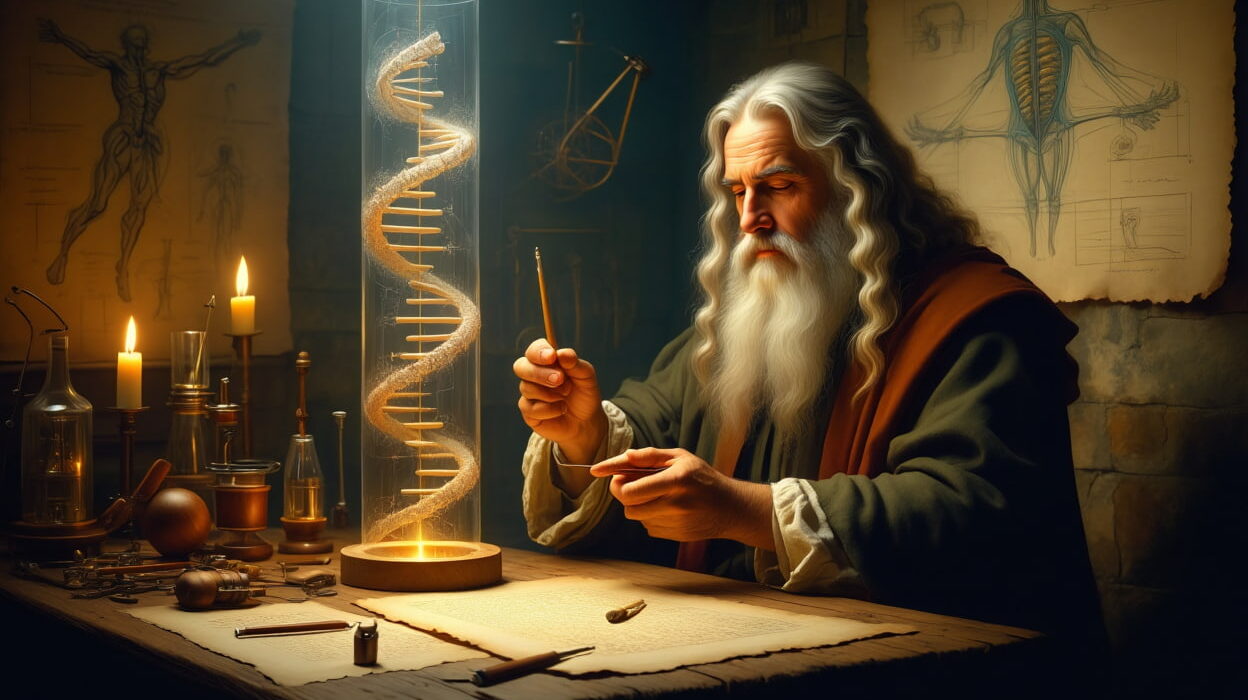More than five centuries after his death, Leonardo da Vinci may soon have his genetic story revealed. An international effort known as the Leonardo da Vinci DNA Project is piecing together his genome through genealogy, descendant DNA testing, and analysis of a Da Vinci family tomb in Vinci, Italy.For 30 years, historians Alessandro Vezzosi and Agnese Sabato have traced Leonardo’s family tree back to 1331, documenting 21 generations and more than 400 relatives. Their work identified 15 direct male-line descendants, six of whom have undergone DNA testing. The results showed shared segments of the Y chromosome, confirming an unbroken Da Vinci lineage.
Excavations in the Church of Santa Croce in Vinci uncovered bone fragments believed to belong to Leonardo’s grandfather and other relatives. Radiocarbon dating and early paleogenomic studies suggest the remains are consistent with male family members. “Further detailed analyses are necessary to determine whether the DNA extracted is sufficiently preserved,” explained project coordinator David Caramelli of the University of Florence.
If genetic material from the tomb matches living descendants, scientists could reconstruct Leonardo’s profile. This could shed light on his health, physical traits, and even the origins of his extraordinary visual and creative abilities. Researchers also hope DNA traces from manuscripts or artworks might one day confirm their authenticity.
Jesse H. Ausubel of The Rockefeller University noted, “21st-century biology is moving the boundary between the unknowable and the unknown. Soon we may gain information about Leonardo and other historical figures once believed lost forever.
The project is more than science—it reconnects Vinci, Leonardo’s birthplace, with its most famous son. As researchers dig deeper into history and genetics, the possibility of hearing Leonardo’s “genetic voice” grows ever closer, offering new perspectives on one of humanity’s greatest minds.
Da Vinci’s DNA: New Study Brings Renaissance Genius Back to Life






